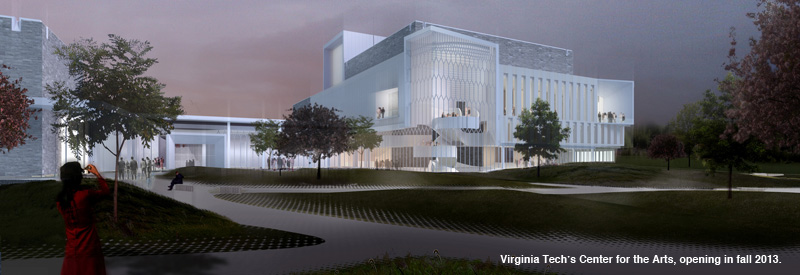Shortly after I became president, we made a commitment, on Founders Day in 2000, to invigorate the university's fine and performing arts spaces and programs. Later, I posited on this page thoughts on the importance of the arts in the college experience. [Editor's note: See the Winter 2001 issue of Virginia Tech Magazine.]
As a university, we strive to educate the whole person--to prepare students for life at work as well as for life beyond work. Creating successful scientists, engineers, and businesspeople is a very different endeavor now than in the past. Research demonstrates that participation in the arts is a pivotal element in this endeavor, that exposing students to the different modes of thinking and problem solving are necessary parts of the creative process.
Two of history's greatest artists, Leonardo da Vinci and Michelangelo, were also among history's greatest engineers. Da Vinci, who painted and sculpted some of the world's greatest artistic treasures, also designed machines for human flight and greatly advanced the state of knowledge in fields as diverse as anatomy and civil engineering. Michelangelo, whose masterpieces include the Pieta, the Statue of David, and the Sistine Chapel ceiling, also engineered the dome of St. Peter's Basilica in Vatican City. For these great thinkers, there were no boundaries between the creative arts, science, and the mechanical arts.
Now, one decade after sharing these ideas with you, the arts are entering a new era on the Virginia Tech campus. In June 2010, we broke ground for the Center for the Arts. Opening in fall 2013, this $89-million, 130,000-square-foot facility will feature a 1,260-seat performance hall, visual art galleries, and creative-technology lab spaces.
The Center for the Arts complex will include both new and renovated facilities at the intersection of North Main Street and Alumni Mall. Its location at the main entrance to campus near the center of the Town of Blacksburg symbolizes our commitment to the arts and to other dimensions of the educational experience, as well as its importance to the university and to our broader community. In addition, the central location surely will stimulate arts-related businesses.
The Center for the Arts will comprise three major areas: the performance hall, visual arts galleries, and the Center for Creative Technologies in the Arts. The performance hall will have the flexibility to present theater, music, and dance performances. The visual arts galleries will incorporate display space for traditional visual art as well as emerging interactive and digital forms. It will exhibit artwork on loan to the university as well as parts of our permanent collection.
The Center for Creative Technologies in the Arts will be housed in new space as well as renovated space in Shultz Hall. The center, a technological incubator, laboratory, and studio setting, will be used to explore the many intersections of art, education, and technology and will enhance education at the primary, secondary, undergraduate, and graduate levels. The center will include the Collaborative Performance Lab, a venue for exploring visual and performance arts using the latest interactive technology.
Through the center, we can leverage the strengths of existing arts programming and explore new relationships between the arts and technology. So, Virginia Tech finally will have facilities supporting the arts to match the university's world-recognized prowess in so many areas of academe.





